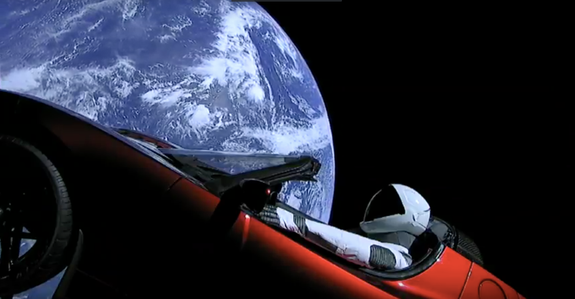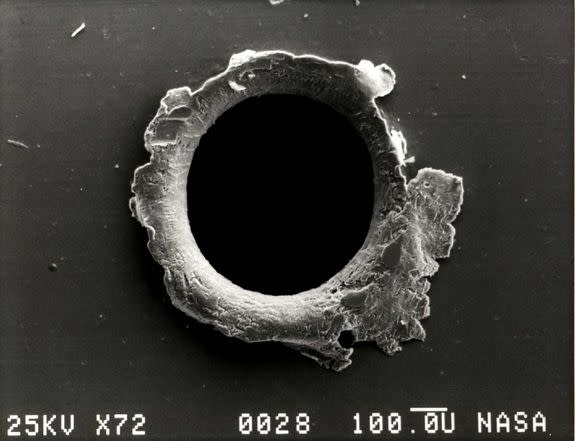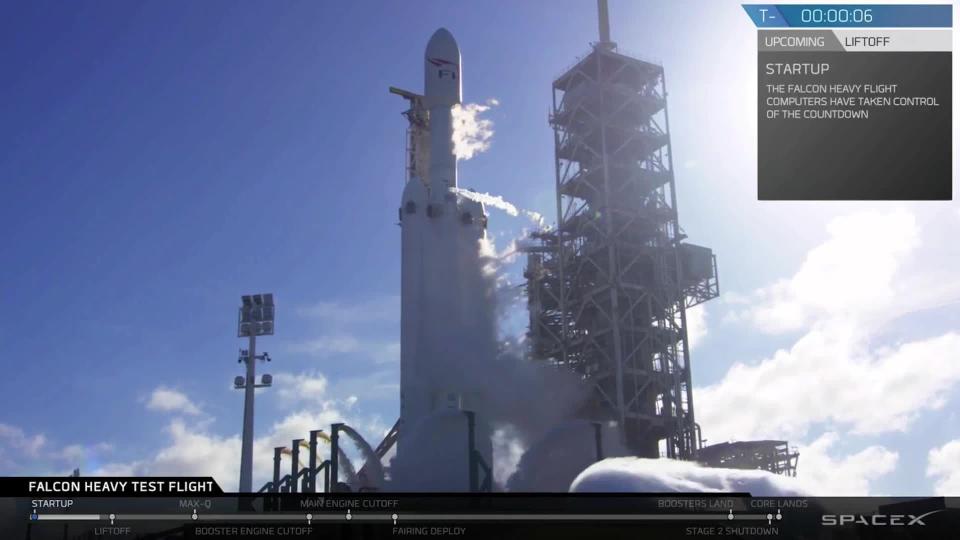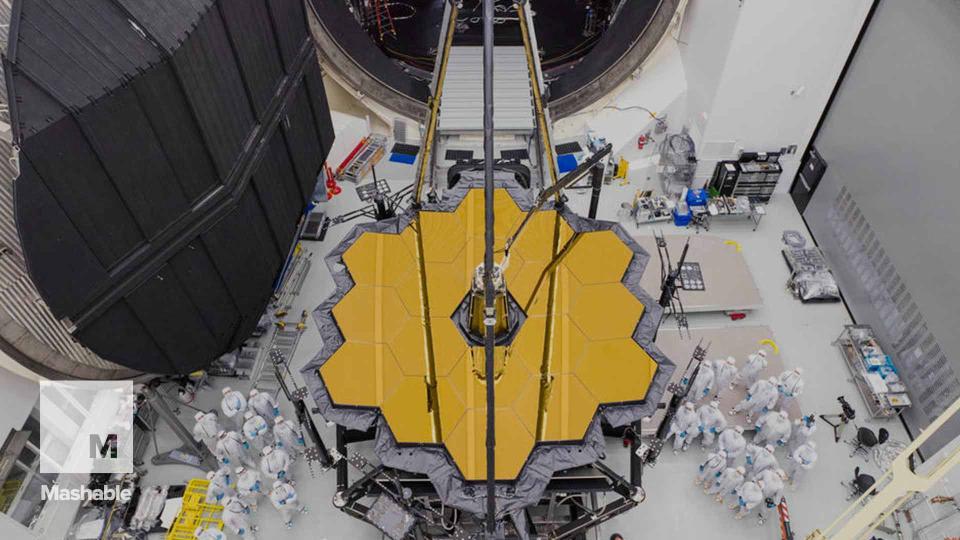Elon Musk's 'Starman' Tesla Roadster isn't your typical piece of space junk

Launching a Tesla Roadster into outer space may have been ridiculous, but the vehicle is far from being worthless space junk.
The stunt actually served an important engineering purpose.
Engineers commonly load their rockets with heavy simulation cargo — often made of metal — so they can accurately test how these expensive launchers will behave as they blast through the skies at some 18,000 miles per hour.
SEE ALSO: Elon Musk's outer space Tesla will overshoot Mars and land somewhere in the asteroid belt
Elon Musk — in a somewhat grotesque show of wealth — decided to send a Tesla in lieu of hunks of metal, called mass models, which are intended to simulate how a load of cargo will act during a rocket's flight.
Scientists: "Space junk is a major problem. The amount of debris in space will triple by 2030. It can destroy satellites and is lethal to people going on future space missions."
Elon Musk: "Word. Hey, watch me shoot this car into space."— Jared Wall (@JaredWall01) February 7, 2018
"They’re dummy versions of actual satellites," Jonathan McDowell, an astronomer at the Harvard-Smithsonian Center for Astrophysics, said in an interview.
Although Musk sensationalized his cargo simulation, these space-bound loads can also be pretty mundane.
"They're historically made to be simple, easy, boring, and cheap simulations," said Tommy Sanford, director of the Commercial Spaceflight Federation, in an interview.
"They use something like heavy cinder blocks — it puts the 'dumb' in dummy payload," said Sanford.

Image: spacex
These dummy simulations serve two necessary functions.
First, most SpaceX customers, like the U.S government, pay the spaceflight company to launch extremely expensive (in the hundreds of millions of dollars) satellites into space. Accordingly, SpaceX needs to tell satellite-makers how much their gear will bounce around and vibrate during the launch, so the pricy machines are prepared for the intense experience.
"Most of the interesting data comes in the first few minutes, because that's where the ride is pretty rough," said McDowell. "So you can see the experience that your satellite is going to have."
"It's just to prove to future customers that their payload is comfortable," noted Sanford.
Second, rocket companies like SpaceX want to know how the cargo they're blasting into space will affect the rocket.
Cargo is positioned atop the rocket in an area called the "payload fairing." As this stuff vibrates, it can affect the rocket — and engineers don't want excessive jolting to occur during an already precarious, high-speed operation.

Image: NASA/JPL
"It's possible for the satellite to feed back into the fairing," said McDowell, who noted that past fairing failures have occurred for this very reason.
Rocket scientists, however, usually have a pretty good idea going into a launch of how their rocket will behave. The launch is often just a confirmation that the rocket works — and can handle heavy loads.
"The launch is to prove out that ground simulations and computer modeling are correct — or at least mostly correct," said Sanford.
SpaceX engineers were mostly correct in their launch calculations, which included the weight of the Roadster and the domed-base it sat on. But if SpaceX could allocate resources to attach the Roadster to a platform, surround it with sturdy cameras, and fit the "Starman" mannequin into a spacesuit, it seems likely that could have — at minimum — incorporated some scientific value into this simulated cargo-turned-space debris.
With a bit of foresight, the Roadster — or a far cheaper object — likely could have been fitted with some data or image-collecting technology that could have been of use to astronomers. After all, any data gathered in space is valuable.
FAQ
Q: Is firing a Tesla into space legal?
A: Yes
Q: Is it just going to keep orbiting forever?
A: Pretty much, yes
Q: Could the car have served a scientific purpose if outfitted differently?
A: Yes
Q: What prevents other billionaires from doing similar launches?
A: Nothing— Mika McKinnon (@mikamckinnon) February 8, 2018
During a press briefing following the successful launch of the Falcon Heavy, however, Musk said that SpaceX isn't necessarily planning to track the car through its solar system orbit, leaving astronomers to investigate where the Tesla might go.
Elon is still talking about the Starman going to the asteroid belt. But I'm not convinced yet... https://t.co/yoU5fCPHKb
— Jonathan McDowell (@planet4589) February 7, 2018
Then there's the growing problem of space debris. It's typical for any test launch to leave debris in the Earth's orbit.
Rocket launches of all persuasions can create space junk unless they're designed to be brought back down to Earth and crash into the ocean. Or, in SpaceX's case, land on drone ships and be reused.
But when rockets leave this test cargo in space — like a pile of cinderblocks — this space debris isn't just haphazardly left to wander around its orbit.
"People could always argue about debris and define it as debris, but when they do those early launches with dummy payload, they make sure they put the dummy payload into a graveyard or inoperable orbit that is not of value to the space community and something that won’t be a threat to future activities in space," said Sanford.

For those concerned about the Tesla Roadster adding to the problem of space litter orbiting Earth, in this case the test cargo has rocketed into deeper space — far away from Earth's orbit — meaning that the usual concerns about space debris crowding out Earth's part of space are somewhat unfounded.
The Roadster will orbit the sun, not the Earth, and thus won't add to the thousands of pieces of junk orbiting our planet, such as derelict satellites and tiny screws.
"That doesn’t mean I think it's fine to arbitrarily launch junk out there [into space]," said McDowell. "But it's not a problem in the way that Earth orbital debris is."
There are still valid concerns that human-made objects could impact icy moons around Jupiter and Saturn, possibly disturbing any life that may exist there or even seeding it with our own life. That said, the possibility of that kind of impact is incredibly low.
The cherry red Roadster has already passed the moon, and McDowell estimates that the vehicle will hit its farthest away point from the sun — somewhere past Mars — in November 2018.
WATCH: Here’s how NASA is preparing the largest telescope ever built for space


